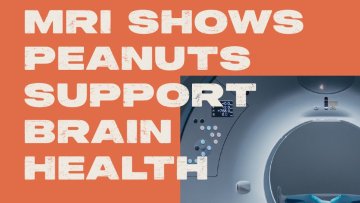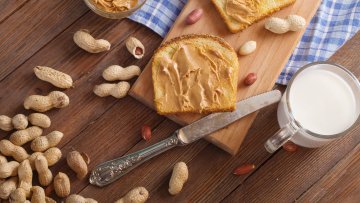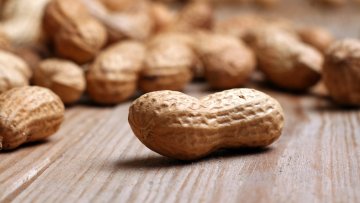Obesity is an increasingly common and serious diagnosis that affects more than 2 in 5 American adults. Being obese increases the risk of several serious conditions, including type 2 diabetes, cardiovascular disease, and certain cancers. From 2019 to 2024, the number of type 2 diabetes diagnoses has risen—for those 18-29, it rose by 26.8%, and for those 30-39, by 26.7%.
To help treat the growing problems of obesity and type 2 diabetes, a relatively new type of medication has quickly grown in popularity: GLP-1s.
How GLP-1 Medications Work
GLP-1 medications like semaglutide (Ozempic, Wegovy) or tirzepatide (Mounjaro) offer a number of benefits for patients, including reduced appetite, improved blood sugar control, and easier weight management.
That’s because these medications work by mimicking our own GLP-1, which is a naturally-occurring hormone that helps stimulate the release of insulin and reduces the release of glucagon (which raises blood sugar). GLP-1 also slows down digestion, which can help you continue to feel “full” for an extended period of time. In the medication version of GLP-1, these effects last longer.
From 2019 to 2024, the percentage of patients prescribed one of these three GLP-1 drugs increased from .03 to .68 percent—a staggering 2,029% increase. For those 18-39 alone, the percent increased by 587%.
And while these GLP-1 medications can be powerful tools for managing obesity and type 2 diabetes, optimizing your nutrition is key to maximizing their effectiveness.3 Peanuts and peanut butter are nutrient-dense protein foods that can help support optimal nutrition for individuals on GLP-1 therapy.
Supporting GLP-1 Naturally
Research suggests that protein, fiber and healthy fats can help support your body’s natural GLP-1 response.4 When eaten as part of a balanced diet, these nutrients may complement your overall approach to managing weight and blood sugar levels—especially when using GLP-1 medications. And the good news? They are all nutrients that peanuts have in abundance.
But let’s break down each one to see what other benefits they can offer.
GLP-1 + Plant-Based Protein
While GLP-1s can promote weight loss, they can also contribute to muscle loss. In fact, some research shows that up to 60% of weight lost on GLP-1s can come from lean mass rather than fat.
That means, if you’re currently taking one of these medications, it’s crucial to add an adequate amount of healthy protein into your diet.
According to the United States Department of Agriculture Nutrient Database, one single serving of peanuts (about 1 ounce) contains more protein than any other nut:
- Peanuts: 7 grams
- Almonds: 6 grams
- Pistachios: 6 grams
- Cashews: 4 grams
- Pecans: 3 grams
- Macadamias: 2 grams
Because peanuts and peanut butter are plant-based, they’re also easier on the environment than animal-based proteins—creating fewer greenhouse gas emissions.
Unlike animal protein, peanuts also include unique bioactives like arginine. This amino acid is a precursor to nitric oxide, which may help reduce the risk of heart disease and keep your blood pressure in check.
Also unlike animal protein, peanuts (which are naturally cholesterol-free) and peanut butter don’t contain trans fats, which can raise cholesterol.
Plus, a long-term study found that swapping one daily serving of animal protein for plant protein (like peanuts or peanut butter) decreases your risk of developing type 2 diabetes.
How a High-Fiber Diet Can Support GLP-1
As with any medication, GLP-1 medications can come with possible side effects—including constipation. Gradually increasing your fiber intake can be helpful during and after GLP-1 therapy. Fiber also helps to increase satiety (the feeling of being “full” and satisfied after a meal), and supports overall digestive health.
How Heart-Healthy Fats Support GLP-1s
GLP-1 medications work in part by slowing down how quickly your stomach empties. Eating high-fat meals (like fried food or full-fat dairy) can slow it down further—leading to uncomfortable side effects like nausea or bloating.
Sticking with a moderate amount of healthy fats, like those in peanuts, olive oil and avocados, is less likely to upset your digestion.
Over 80% of the fats in peanuts are from healthy unsaturated fats. About 50% of that is monounsaturated fat, which is the same type found in avocado and olive oil, while 30% is polyunsaturated fat, which is important for heart health.
Because of this unique combination, the 2020-2025 Dietary Guidelines for Americans named peanuts as a key recommendation.
Studies show that replacing saturated fats with monounsaturated and polyunsaturated fats can offer some incredible benefits, including:
- Reducing LDL or “bad” cholesterol that can lead to blocked arteries.
- Reducing the risk of a heart attack or stroke.
- Decreasing the risk of dying from cardiovascular disease.
Peanuts and Peanut Butter Can Support Your GLP-1 Journey
Since GLP-1s reduce appetite and slow digestion, they can lead to unintended side effects like muscle loss and reduced gastrointestinal motility (constipation). Eating a balanced diet with protein, fiber and healthy fats (which are found in peanuts and peanut butter) may contribute to your overall health and wellness while you are on your GLP-1 journey.
Looking for more ways to incorporate peanuts and peanut butter into your daily diet? Be sure to check out our recipe collection—including special sections for high-protein, high-fiber, and weight management.
Source: The Peanut Institute Scoop – June 26, 2025




